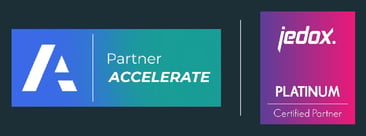Sales and Operation Planning (S&OP) might just be one of the most complex planning processes there is, including demand, supply and inventory planning. Its aim is to match what businesses buy or produce, with what they plan to sell.
With that in mind, is your S&OP planning as good as it should be? Here’s what you need to know.
- What does a good S&OP solution look like?
- Challenges, implications
- Good characteristics of S&OP to look out for
What does a good S&OP solution look like?
A good S&OP solution needs to excel in four areas: automation, agility, control and speed. Spreadsheets and inflexible software tools aren’t an effective long-term solution to complex S&OP planning and can result in inaccurate forecasting, missed deadlines, a surplus of stock and more.
Here’s what a good S&OP solution can look like when flexible, collaborative and innovative software is successfully implemented.
Automation
- Automated processes for bringing in data from multiple data sources ensures data integrity and removes manual data processing.
- Software that references master data means you don’t have to manually maintain hierarchies. This removes a lot of model maintenance for your team.
Agility
- Dynamic models reflect changes within the business as they happen.
- Your team can change modelling criteria and run multiple scenarios at the same time, but most important of all - quickly. This supports timely decision-making at all points in S&OP.
Control
- A centrally controlled model and workflow ensures that your team is in control of the planning process.
- Software that doesn’t require expert IT coding skills to implement changes means that your team aren't reliant on costly IT or consulting resources.
Speed
- Software that offers faster calculation time and drives timely collaboration means you can examine multiple scenarios and react faster to changes in demand.
- It also results in a fast flow of information across your finance, supply and demand plans - again driving ease and speed of collaboration.
Challenges AND implications
Right now, businesses face the issue of not having a solution that’s both scalable and secure to handle the entire S&OP process. There’s also the lack of flexibility which means they can’t model real-world scenarios that inevitably impact businesses and the way you operate. As a result, this creates challenges and implications for business which you’ll need to overcome.
|
Challenges |
Implications |
|
|
Connected S&OP aligns the different departments within your business to ensure that you’re flexible and agile to meet changes in demand. However, to overcome the challenges and implications above, many businesses need to re-think the software tools they use for this critical planning process. Software specifically designed for planning, will enable effective collaboration, process large volumes of data in real-time, coordinate across multiple business units and more.
When you have an enterprise-wide solution implemented within your business that’s ideal for S&OP, you can connect the right data with the right people at the right time. This makes it possible to pass accurate information across the business, drive effective collaboration and consider multiple scenarios in S&OP simultaneously.
When it comes to deciding on the right software for your business to help overcome the challenges and potential implications your business faces, there’s certain criteria your choice of software should meet.
CHARACTERISTICS OF GOOD S&OP TO LOOK OUT FOR
To overcome the challenges and implications, a reliable S&OP solution is required. The good news is that with so many innovative tools emerging and the future looks bright for the next generation of S&OP.
The Gartner Magic Quadrant examines the main vendors that provide S&OP systems. You can use this report when selecting a platform to help enable S&OP maturity for your business. Here are some key characteristics of good S&OP to look out for.
- Financial Impact Analysis: This is the ability to run multiple scenarios that are linked to the P&L so there’s visibility over the final impact of decisions made. It also allows financial decisions to be taken inside S&OP.
- Hierarchy and Translations Management: This assists in mapping multidimensional data from source data to the common reporting structure. Without the automated process, this can take a lot of hours from the people involved and moves their focus from analysis to data manipulation, translation and corrections.
- Collaboration Support: Having the ability to socialise plans and scenarios lets cross-functional teams focus on balancing demand and supply with a common understanding of the options.
- Supply Chain Modelling to Support Creating Multiple Scenarios: This covers the necessary analytics to model multiple, complex supply chain decisions. It also gives you access to an appropriate baseline supply chain model to help align and enhance decision-making at all levels.
- Analytics and Performance Management: This includes dashboards, scorecards and relevant predictive and prescriptive analytics. With the addition of AI and ML in S&OP solutions, they can help in areas such as data preparation, decision recommendation and scenario creation - elevating the level of S&OP decision-making automation.
These are only a handful of the many key characteristics of S&OP to look out for. As there’s so much more to cover, we’ve created a guide on how you can select the best S&OP software for your business which features even more characteristics.
Choose the best S&OP software for your business
To help make your choice easier, we’ve created a free checklist to help you narrow down your choices. It includes information on the many problems Connected S&OP software can solve, how to evaluate your options, features to look out for and more.
To get your free copy, click on the link below.



